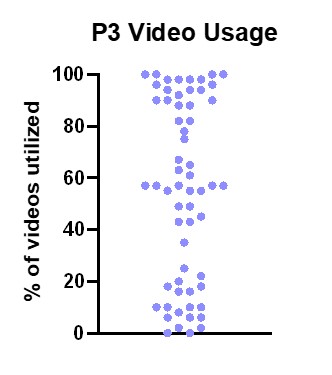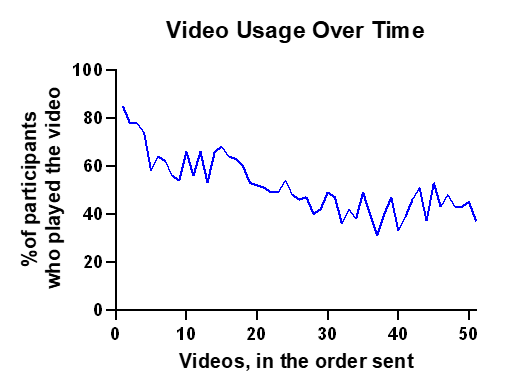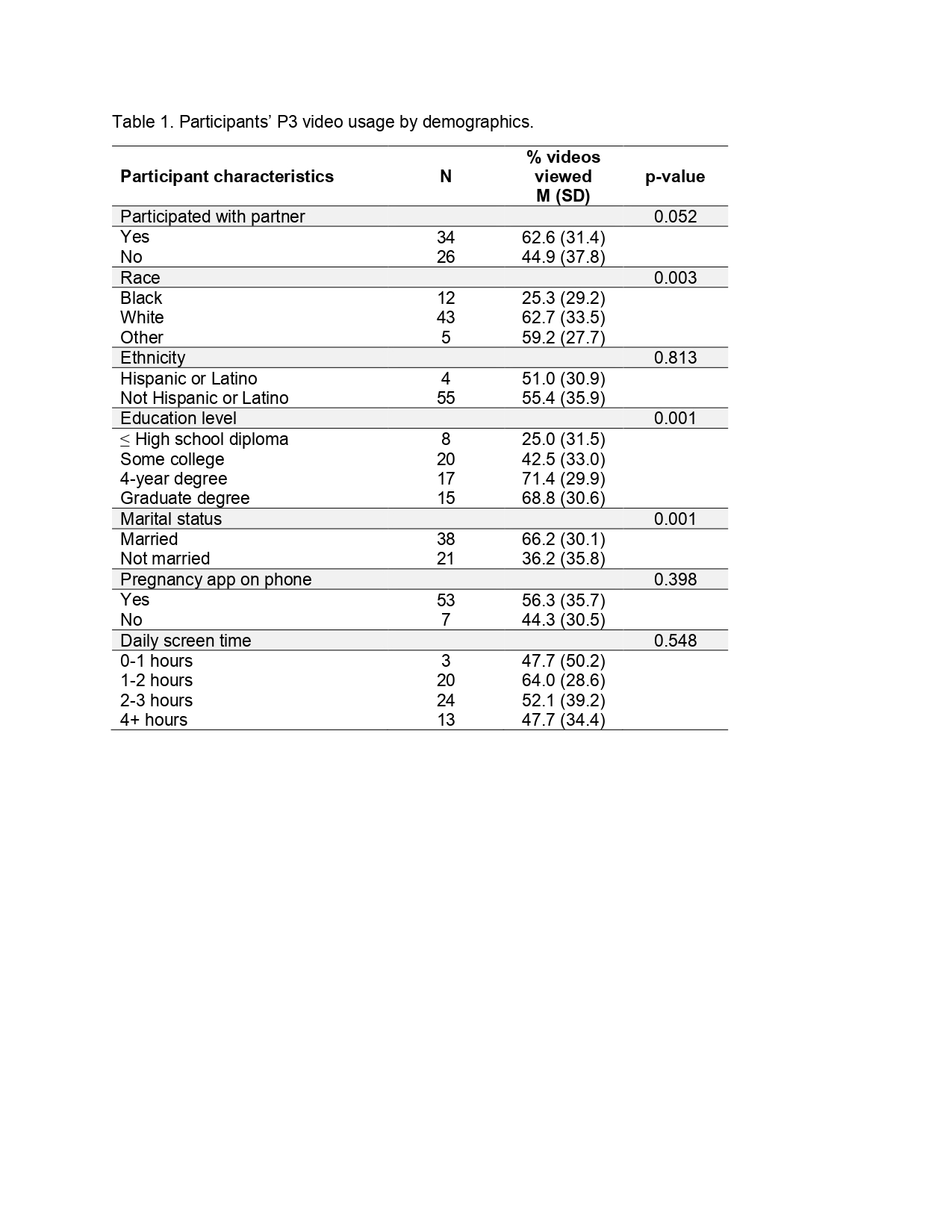Health Services Research
Session: Health Services Research 4: Population Monitoring and Management
246 - If You Build It, Will They Come? Utilization of Smartphone Preterm Birth Education by Pregnant Patients at Risk of Preterm Birth
Sunday, May 5, 2024
3:30 PM - 6:00 PM ET
Poster Number: 246
Publication Number: 246.1924
Publication Number: 246.1924
- SM
Siobhan M. McDonnell, MS (she/her/hers)
Clinical Research Assistant
Medical College of Wisconsin
Willmar, Minnesota, United States
Presenting Author(s)
Background: Mobile health (mHealth) for patient education and empowerment is dependent on how the technology is embraced. Despite NIH-recommendation to use mHealth’s large volume of data to better assess treatment effects, reports of patients’ mHealth use are often limited to self-report and qualitative data. In our randomized controlled trial of the Preemie Prep for Parents (P3) prenatal education program, software objectively tracked use.
Objective: Examine the usage patterns of pregnant participants receiving the P3 program.
Design/Methods: This is an ancillary analysis of the trial (NCT04093492) which randomized pregnant patients with medical conditions that predispose to preterm birth to receive the P3 program or a control. Throughout pregnancy, the P3 arm was periodically sent text messages, each with a link to 1 of 51 short, animated videos that provide prenatal guidance on preterm birth. Select videos were sent twice or more. P3 participants also had direct access to the video library on the P3 website. Software tracked P3 video utilization, including if a participant clicked on a video link from the text message or the website, timestamps, and play time of the video.
Results: Overall, 5688 text messages were sent to the 60 P3 participants and 2387 links were clicked on. Participants played a mean 55% (SD 35) of videos sent (Figure 1), with an average of 1 hour 25 minutes of playing videos. Usage differed by video, ranging from 88% to 33% of participants playing each video; usage tended to be lower for videos sent later in the pregnancy (Figure 2). Videos sent twice or more throughout the pregnancy were more likely to be played than those sent only once. Videos that were started were played until the end 95% of the time. The majority of video views were accessed through the text message link (77.4%), rather than directly from the website. Over half (55.0%) of participants had at least one day of ‘binge watching’ (i.e., playing ≥5 videos a day). Though most texts were sent at 9am, participants played most of the videos between 12pm and 6pm. Usage differed by certain participant characteristics (Table 1). For example, participants pregnant with multiples tended to play more videos; participants with a history of preterm birth tended to play fewer.
Conclusion(s): Objective tracking data shows that pregnant patients engaged with the P3 program. The patterns of use will guide implementation of the P3 program on a larger scale.



